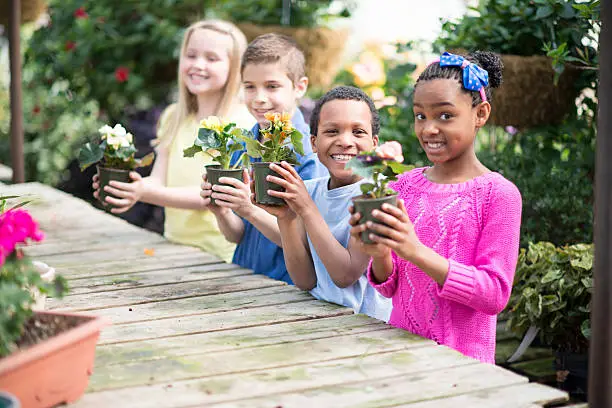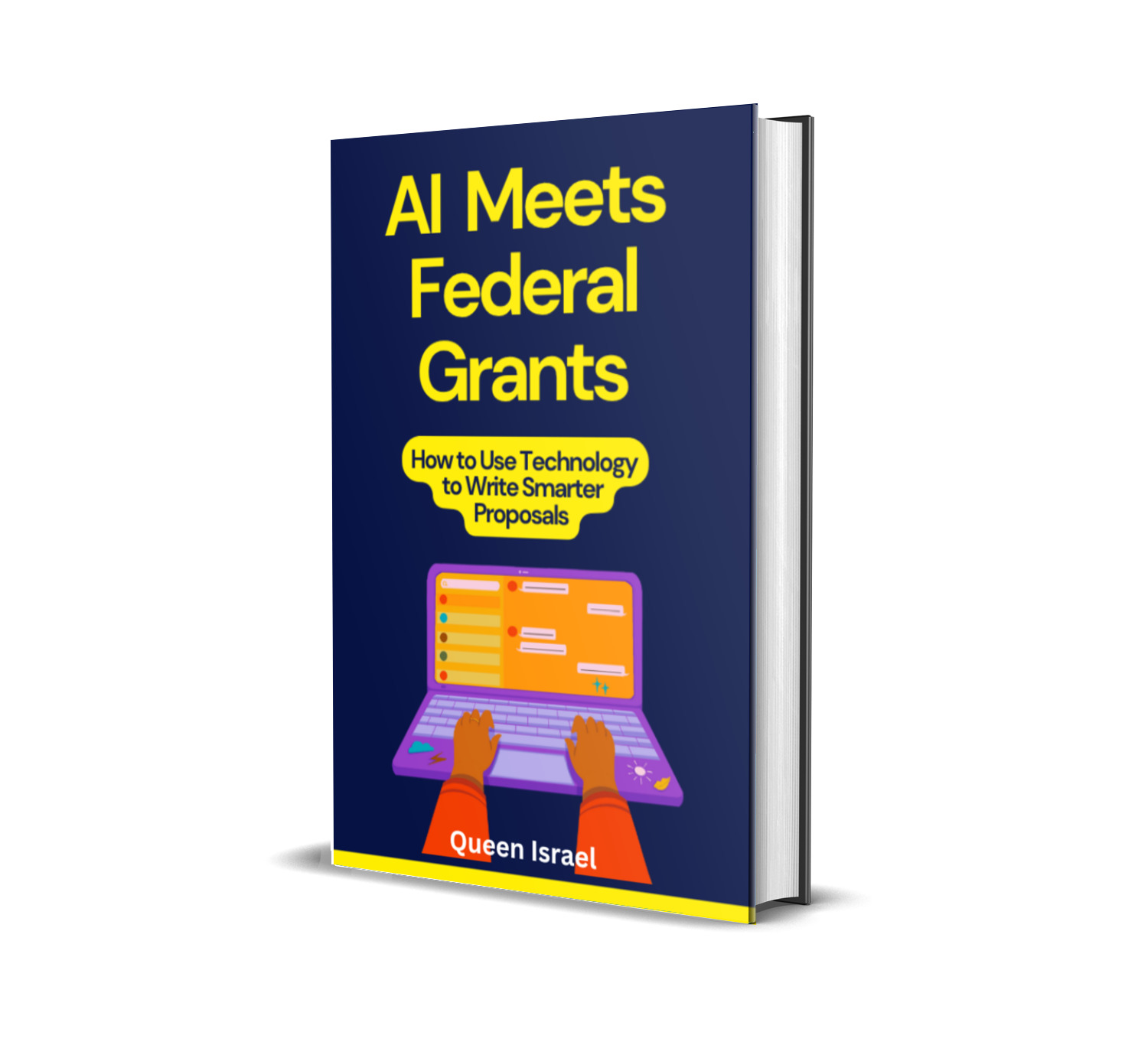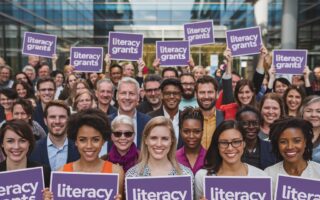Grant ideas for elementary schools are more essential than ever in today’s educational landscape. As schools continue to face budget cuts, limited resources, and increased demand for high-quality educational programs, grants provide a lifeline to unlock opportunities for innovation and growth.
Whether you’re looking to improve classroom technology, enhance extracurricular activities, or implement specialized programs that foster inclusivity and diversity, grants can make it possible.
In this guide, we’ll explore a variety of creative and impactful grant ideas for elementary schools. From funding for STEM (Science, Technology, Engineering, and Math) initiatives to grants that support mental health programs, this article will provide you with a list of ideas, resources, and actionable steps for securing funding.
You’ll also find tips on how to structure your grant proposals, and how to enhance your school’s success rate in receiving grants.
Why Grants Matter for Elementary Schools?
Elementary schools often have tight budgets, and finding ways to stretch those dollars is a constant challenge. However, grants can provide a much-needed boost.
According to the National Center for Education Statistics, public elementary and secondary schools in the U.S. spend an average of $13,000 per student per year. But these funds are often spread thin across everything from classroom supplies to building maintenance, leaving little for enrichment programs or specialized projects.
That’s where grants come in. They can provide additional funding for programs, supplies, and services that wouldn’t otherwise be available. The right grants can give schools the flexibility to offer enriched learning experiences, support teachers with professional development, or invest in technology that prepares students for the future. Not only do these grants pave the way for student success, but they also empower teachers and administrators to create more effective and engaging learning environments.
/>
Top Grant Ideas for Elementary Schools
Let’s dive into some of the most promising grant ideas that elementary schools can consider. Each idea is paired with practical suggestions on how to approach funding, potential resources, and the impact these grants can have on your school community.
1. STEM Programs and Resources
Focus on: Science, Technology, Engineering, Math
STEM education is critical for preparing students for the future. A 2023 report by the U.S. Department of Education emphasized that STEM learning enhances problem-solving skills, teamwork, and creativity. At the elementary level, STEM programs inspire curiosity and innovation.
Grant Idea:
- Target: Schools aiming to build or expand STEM programs.
- Purpose: Purchase technology like computers, tablets, or robotics kits; fund hands-on STEM activities; support teacher training in STEM instruction.
- Resources:
- National Science Foundation (NSF) offers educational grants.
- STEM Learning Ecosystem Initiative (a federal program focusing on STEM).
Impact: Increased student engagement in science and math, enhanced problem-solving skills, and early exposure to potential career fields in tech and science.
2. Literacy and Reading Improvement
Focus on: Reading, literacy programs, education enhancement
Literacy is foundational for all future learning. Research from the Annie E. Casey Foundation shows that students who read proficiently by third grade are 3.6 times more likely to graduate high school. Improving reading skills in the early years sets the stage for lifelong academic success.
Grant Idea:
- Target: Schools looking to enhance reading instruction and materials.
- Purpose: Support reading intervention programs, purchase new books, fund teacher training on advanced literacy strategies.
- Resources:
- Dollar General Literacy Foundation supports literacy programs.
- Reading Is Fundamental offers resources and grant ideas.
Impact: Better reading outcomes, higher student confidence, and improved overall academic performance.
3. Social-Emotional Learning (SEL) Programs
Focus on: Social-emotional well-being, mental health, student support
Social-emotional learning (SEL) is essential for students to navigate not just their academic lives but also their personal and social challenges. According to the Collaborative for Academic, Social, and Emotional Learning (CASEL), students with strong SEL skills are more likely to succeed academically and socially.
Grant Idea:
- Target: Schools aiming to implement or enhance SEL initiatives.
- Purpose: Develop SEL curriculum, train teachers in SEL strategies, purchase SEL resources like mindfulness apps or classroom kits.
- Resources:
- Robert Wood Johnson Foundation funds health and well-being initiatives.
- Local community foundations often support SEL projects.
Impact: Improved student behavior, increased empathy and teamwork, reduced bullying incidents, and a more positive school climate.
4. Physical Education and Wellness
Focus on: Health, physical education, student fitness
A healthy body supports a healthy mind. Physical education not only promotes physical health but also aids concentration and mental well-being. According to the CDC, regular physical activity can improve academic performance by enhancing concentration and memory.
Grant Idea:
- Target: Schools seeking to strengthen physical education and wellness programs.
- Purpose: Purchase sports equipment, enhance gym facilities, fund fitness programs, or host wellness workshops.
- Resources:
- Alliance for a Healthier Generation offers the Healthy Schools Program.
- Let’s Move! Active Schools provides resources and potential funding ideas.
Impact: Increased student physical health, reduced obesity rates, better concentration, and improved classroom behavior.
5. Inclusive Education and Special Needs Support
Focus on: Special education, inclusive classrooms, accessibility
Every student deserves a quality education. Inclusive education ensures that children with disabilities or special needs get the support they require to thrive. Research published in the Journal of Special Education Technology highlights that inclusive classrooms, when properly supported, can benefit all students by fostering empathy and cooperation.
Grant Idea:
- Target: Schools focusing on inclusive practices and special education.
- Purpose: Fund specialized learning materials, hire or train staff in special education methods, improve accessibility in classrooms.
- Resources:
- U.S. Department of Education’s Office of Special Education Programs (OSEP) offers grant opportunities.
- The ARC provides resources and advocacy for inclusive education.
Impact: Better learning outcomes for students with disabilities, enhanced teacher skills, and a more welcoming learning environment for all.
6. After-School and Enrichment Programs
Focus on: Extracurricular activities, after-school learning, student engagement
After-school programs provide valuable opportunities for students to explore interests, complete homework, and gain new skills in a safe environment. The Afterschool Alliance found that children participating in after-school programs show improved academic performance and social skills.
Grant Idea:
- Target: Schools looking to start or expand after-school programs.
- Purpose: Fund arts, music, sports, coding clubs, and other enrichment activities; cover staffing and program materials.
- Resources:
- 21st Century Community Learning Centers offers federal funding.
- Afterschool Alliance provides resources and guidance.
Impact: Increased student engagement, improved academic outcomes, safe environments for after-school hours, and development of new skills.
7. Environmental Education and Sustainability
Focus on: Environment, sustainability, green initiatives
Environmental education fosters a sense of stewardship in students, encouraging them to take responsibility for their world. Programs may range from creating school gardens to implementing recycling programs. According to a study by the National Wildlife Federation, early exposure to nature and sustainability education can lead to lifelong environmental advocacy.
Grant Idea:
- Target: Schools wanting to implement or expand environmental education programs.
- Purpose: Launch school gardens, create recycling programs, invest in green infrastructure, fund nature-based field trips.
- Resources:
- Environmental Protection Agency (EPA) offers grants for education and environmental initiatives.
- National Wildlife Federation’s Eco-Schools USA provides resources and funding opportunities.
Impact: Students learn about sustainability, increased community involvement, reduced waste, and enhanced school biodiversity.
8. Technology and Digital Literacy
Focus on: Digital skills, technology integration, modern learning
Ensuring students develop strong digital literacy skills is critical in our increasingly digital world. By integrating technology in the classroom, schools can offer interactive learning experiences, personalized education, and prepare students for a tech-driven future.
Grant Idea:
- Target: Schools aiming to upgrade their technology infrastructure.
- Purpose: Purchase new computers, interactive whiteboards, educational software, or online learning subscriptions; provide teacher training on new technologies.
- Resources:
- Best Buy Foundation supports technology initiatives in schools.
- DonorsChoose can help crowdfund classroom technology needs.
Impact: Improved access to digital resources, enhanced teaching methods, better preparation for future careers, and a more engaging classroom environment.
9. Cultural and Arts Education
Focus on: Arts, creativity, cultural awareness
Exposure to the arts enriches students’ lives, fostering creativity, empathy, and critical thinking. Arts education can include visual arts, music, theater, and dance. Research by Americans for the Arts shows that students engaged in arts education are four times more likely to be recognized for academic achievement.
Grant Idea:
- Target: Schools looking to expand their arts education offerings.
- Purpose: Purchase art supplies, support music or theater programs, hire artists-in-residence, fund cultural exchange programs.
- Resources:
- National Endowment for the Arts (NEA) offers grants for school arts programs.
- The Awesome Foundation occasionally funds creative educational projects.
Impact: Increased student creativity, better cultural awareness, improved academic performance, and a more vibrant school community.
10. Teacher Professional Development
Focus on: Teacher training, instructional improvement, educator support
Teachers drive the success of educational programs, and professional development is essential for keeping teaching methods current, engaging, and effective. According to a 2022 Gallup Poll, 73% of teachers believe professional development positively impacts their teaching.
Grant Idea:
- Target: Schools committed to investing in teacher growth.
- Purpose: Fund workshops, conferences, certifications, peer collaboration sessions, and access to online courses.
- Resources:
- NEA Foundation offers grants for teacher development.
- Teach for America provides resources and programs that support teacher training.
Impact: Enhanced teaching strategies, higher student achievement, improved job satisfaction among teachers, and a culture of continuous learning in schools.
Grant Writing Strategies
Knowing the types of grants available is half the battle. The next step is crafting a compelling proposal that resonates with funders. Here are some expanded strategies to increase your success rate:
a) Understanding the Grant Landscape
Before diving into the writing process, take time to research the grant landscape relevant to elementary education. Look at past recipients, successful proposals, and foundational priorities. Websites like Grants.gov are treasure troves of information. Understanding what funders value—whether it’s measurable outcomes, community involvement, or innovative approaches—will shape your application.
b) Building a Compelling Narrative
When writing a grant proposal, tell a story. Share anecdotes that illustrate the impact of your programs on students’ lives. Use data to back up your claims—numbers resonate. For instance, if implementing a new reading program increased literacy rates by 15% over a year, showcase that success. Personal stories of teacher and student experiences add authenticity and relatability.
c) Collaboration and Community Engagement
Funders often look for projects with broad community support and involvement. Engage parents, local businesses, and community organizations. Demonstrating collaborative efforts strengthens your proposal. Surveys, letters of support, or community testimonials can be powerful evidence of need and support.
d) Detailed Planning and Follow-Up
A successful grant proposal isn’t just about the idea—it’s also about how you plan to implement it. Provide a timeline, list measurable objectives, and outline a realistic budget. After submission, prepare for the possibility of needing to answer follow-up questions or provide additional documentation. Being prompt and professional in communication reflects your commitment to the project’s success.
Data and Success Stories
Let’s look at some stats and success stories to illustrate the potential impact of effective grant writing:
- A study from the Bill & Melinda Gates Foundation highlighted that schools with robust grant-funded programs saw a 20% improvement in student engagement.
- According to the U.S. Department of Education, schools that invest in professional development through grants improved their standardized test scores by an average of 5%.
- One elementary school in Ohio secured a STEM grant that led to the creation of a robotics club. Within a year, 85% of participating students reported increased confidence in math and science subjects, illustrating the transformative power of grant-funded programs (source).
These numbers and stories show that with the right grant and a solid proposal, significant positive changes are possible.
Subscribe for More Insights!
If you want to boost your school’s chances of securing grants and access more strategies, templates, and tools, make sure to subscribe to the Grant Writing Academy Newsletter.
Our newsletter is packed with tips, strategies, and exclusive resources to help you successfully navigate the world of grant writing. Whether you’re a beginner or an experienced grant writer, we’ve got you covered.
By subscribing, you’ll receive:
- Exclusive strategies on how to write compelling proposals.
- Templates for common grant applications.
- Tools to organize and manage grant projects.
- Success stories and case studies from schools just like yours.
- Resource lists and links to relevant grant opportunities.
Subscribe Now to empower your school with the knowledge and tools needed to secure life-changing grants!
Conclusion: Taking the Next Steps
Grant ideas for elementary schools provide a vital opportunity to enhance education, foster innovation, and support the growth of young learners. By identifying the right funding sources and writing a compelling proposal, schools can secure the resources needed to implement these powerful programs.
Remember:
- Start by researching and understanding your needs.
- Use data and personal stories to make your case.
- Align your proposal with the funding organization’s mission.
- Follow guidelines meticulously and plan for implementation.
Now is the perfect time to explore these grant ideas and bring your school’s vision to life. The potential benefits for students, teachers, and the community are immense. Each successful grant not only provides funds but also creates a blueprint for future projects.
For more detailed tips and strategies on writing winning grant proposals, don’t hesitate—subscribe to the Grant Writing Academy Newsletter today. Step into the future of education with confidence, armed with knowledge, resources, and a supportive community behind you.
Additional Resources and Support
a) Expand Your Knowledge
The grant writing field is always evolving. Keep learning and improving your skills to stay competitive.
Recommended Resources:
- Request for Proposal Success: How to Write Proposals That Win: Learn the techniques and strategies to create standout proposals.
- Tech Startup Funding Secrets: Navigating Grants for Maximum Growth: Perfect for those in the tech sector looking to leverage grants for scaling.
- Grant Proposal Guide for Environmental Projects: Tailored for environmental initiatives seeking to secure impactful funding.
- The Ultimate Guide to Federal Grant Applications: Techniques for Success: Master the complexities of federal grants with actionable insights.
Explore More Books Here
b) Invest in Expert Guidance
Want to fast-track your growth and achieve even more success?
Join one of our mentorship programs for tailored advice and support:
Mentorship Programs:
- 3-Month Mentorship: The Foundation Builder: A short-term plan to refine your grant writing skills and win your first (or next) grant.
- 6-Month Mentorship: The Proposal Pro: Dive deeper into strategies, proposal reviews, and funding plans.
- 1-Year Mentorship: The Funding Champion: Build long-term success with comprehensive guidance, unlimited reviews, and exclusive resources.
C) Book a One-on-One Consultation
Sometimes you just need personalized advice to tackle challenges or fine-tune your strategy. Let’s work together to solve your unique grant writing challenges.






